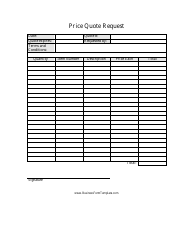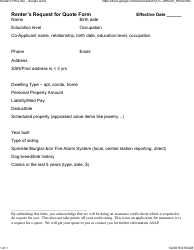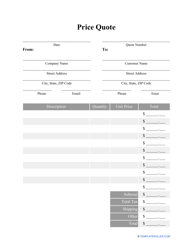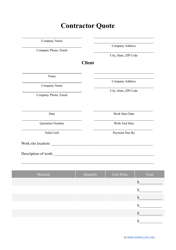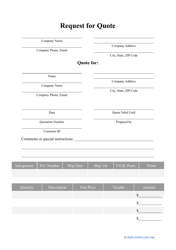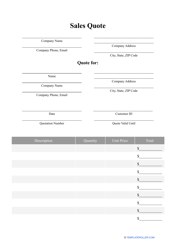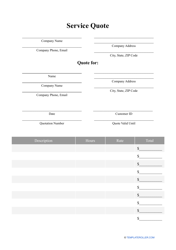What Is a Quote in Business: Free Quote Templates

What Is a Quote?
A Quote is a written document issued by a business and sent to a potential purchaser to outline the price of goods and services before the buyer is committed to a deal. A Business Quote will allow you to clarify the customer's requirements, answer their questions, and make sure all the preferences and expectations of the client are noted before you start negotiations and sign an agreement. The purpose of the Quote is to anticipate what the client is looking for and to show you are capable of delivering the product or service they have been lacking.
Types of Quotes in Business
- What Is a Bond Quote?
- What Is a Payoff Quote?
- What Is an Insurance Quote?
- What Is a Freight Quote?
- What Is a Stock Quote?
- Service Quote Template
- Price Quote Template
- Sales Quote Template
- Request for Quote Template
- Contractor Quote Template
How to Make a Quote?
Follow these steps to make a Quote, convince a potential buyer your company can offer them products and services they need, and stand out among your competitors:
- Consider choosing a template you will use for most clients . It will be necessary to customize the document to suit the needs of a particular purchaser - even if you only change several details in the introduction, but in general, the pricing list should remain the same since you cannot offer different new clients different terms.
- Add a Quote number - keep a copy of the document for your own records, and an identification number will help you remember what conditions you have offered a customer in the beginning and what specifics you have included to persuade them to work with you in the first place.
- Indicate the date the Quote is issued - most Quotes are time-sensitive, and your proposal should not be indefinite; instead, tell the recipient they can contact you and obtain the goods and services with the listed value only in the next two weeks or month.
- Draft a table to list the products you are selling and the services you are providing . Record a price per item, notify the client about the costs of labor and material, and add sales tax if needed.
- Write down the terms of payment - they will depend on the customer and the industry you are working in; for example, if you are a contractor, you may offer the client to pay you in installments over the course of several months. Otherwise, it is common practice to ask for a deposit or another form of advance payment for the items and services you offer.
- Finish the Quote by calling a customer to action - add your contact information and ask them to reach out to you once they make their decision on signing an agreement with you.
How to Send a Quote?
Here is how you should inform the potential customer about the price of your goods and services:
- Keep the Quote brief and concise - there is no need to offer a full breakdown of your work or share the detail of every project you have worked on; one or two pages should be enough.
- Pick a perfect time to send a Quote - the chance your e-mail will be read quicker if you send it between 9 and 11 a.m. is higher; additionally, e-mails sent between Tuesday and Thursday are replied to faster.
- Tailor the Quote for every client - do not copypaste information from one document to the other; instead, the content should be personalized. Research the customer prior to sending an e-mail, learn more about their values and needs, and mention them in the Quote.
- If you are opting for a printed Business Quote instead of sending out digital copies, it may be difficult to attach several files to a traditional written letter . Instead, you should enclose a brochure that lists your services and provides an overview of your company.
How to Request a Quote?
If you are looking for a new supplier, you have to know enough about the organization before signing a deal with them. To do so, request a Quote demonstrating you mean business and are serious about future collaboration:
- Indicate what you are looking for . Describe your own entity in several sentences to give the recipient an opportunity to know you better.
- Share numbers - whether you are starting your business or managing a large corporation, you need to explain how much money you are willing to spend.
- Record the terms and conditions of a future contract you have in mind already - the terms of payment, delivery requirements, and the quality of goods you need.
How to Respond to a Quote?
Once the Quote is delivered to a customer, it is recommended to wait for two or three business days for a reply, and if the client has not reached out to you, follow up on the Quote. To remind a customer about your offer, you need to reiterate your desire to work with them, make a reference to your previous letter or phone call, and ask the potential purchaser to confirm they have received the Business Quote if you have not had any letters or talks over the phone since you have shared the price list.
Related Topics:
